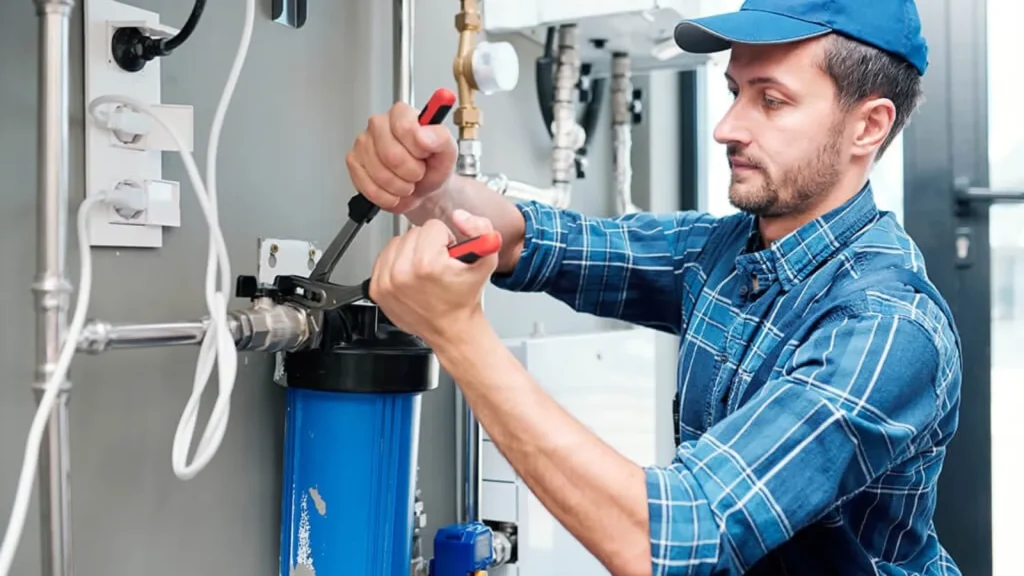Investing in a whole home water filter is one of the smartest decisions you can make for your family’s health and comfort. Unlike point-of-use filters that only treat water at a single tap, a whole home system ensures that every drop of water flowing through your pipes—whether in the kitchen, bathroom, laundry room, or outdoor spigot—is clean, clear, and free from harmful contaminants from the moment it enters your home.
What Is a Whole Home Water Filter?
A whole home water filter is a comprehensive filtration system installed at the main water line, so it treats all incoming water before it reaches any fixture. This upfront filtration approach protects your plumbing and appliances, extends the life of water-using devices, and provides consistently high water quality throughout your home.
Key Benefits
Health and Safety
By removing chlorine, sediment, heavy metals (like lead and mercury), and various organic compounds, a whole home water filter reduces your family’s exposure to potentially hazardous substances. Cleaner water means fewer risks of gastrointestinal problems and skin irritations.
Improved Taste and Odor
Chlorine and sulfur compounds often give tap water an unpleasant taste and smell. A whole home system enhances the flavor of drinking water, improves the quality of cooked food, and makes showering a more pleasant experience.
Protection for Appliances and Plumbing
Sediment and scale buildup can clog pipes, shorten the lifespan of your water heater, washing machine, and dishwasher, and drive up repair costs. Filtering out these particles reduces maintenance needs and prolongs equipment life.
Convenience and Cost Savings
Instead of buying bottled water or installing multiple point filters, a single whole home unit serves every tap. While the up-front cost is higher, it often pays for itself through reduced bottled water purchases, fewer plumbing repairs, and lower energy bills.
Types of Whole Home Water Filters
Sediment Filters
Capture sand, rust, and dirt particles. Usually the first stage in a multi-stage system.
Activated Carbon Filters
Adsorb chlorine, volatile organic compounds (VOCs), and improve taste and odor.
KDF (Kinetic Degradation Fluxion) Filters
Target heavy metals and control bacteria growth through a copper-zinc medium.
Reverse Osmosis (RO) Systems
Though more common at the point of use, some whole home RO systems exist for complete contaminant removal—including fluoride and nitrates.
UV (Ultraviolet) Purifiers
Use UV light to inactivate bacteria, viruses, and other microorganisms, often paired with other media.
Choosing the Right System
Test Your Water
Before selecting, have a comprehensive water analysis performed. Identify which contaminants you need to remove.
Flow Rate Requirements
Calculate your peak demand (e.g., multiple showers running at once) to ensure the filter can handle your household’s maximum flow without a pressure drop.
Maintenance Needs
Filters require periodic replacement—some every 3 months, others annually. Factor in these recurring costs.
Certification
Look for NSF/ANSI certifications to guarantee that the system has been independently tested for effective contaminant removal.
Installation and Maintenance
Professional vs. DIY
While some homeowners with plumbing experience install simple sediment-only units themselves, complex multi-stage systems are best handled by a licensed plumber to ensure correct placement, leak-free connections, and proper bypass valves.
Filter Changes
Keep a schedule—replace sediment and carbon filters every 6–12 months, and more frequently if your water is especially turbid. KDF media can last several years but should still be checked annually.
System Sanitization
At least once a year, flush and sanitize the system to prevent bacterial growth. Follow the manufacturer’s guidelines for cleaning and disinfection.
Cost Considerations
Component Typical Cost Range
- Whole Home Filter System $800 – $3,500
- Professional Installation $300 – $1,000
- Annual Maintenance $100 – $300
Despite higher up-front expenses compared to single-tap units, the long-term value—health protection, appliance savings, and reduced bottled water spending—makes a whole home water filter a cost-effective choice.
A whole home water filter provides peace of mind, knowing every drop of water you use is clean and safe. By carefully assessing your water quality needs, selecting the right system, and keeping up with maintenance, you’ll enjoy better-tasting water, healthier skin and hair, and lower long-term costs. Make the switch today, and experience the benefits of whole home filtration in every shower, load of laundry, and glass of water.
You may also like
-
Bright Ideas, Low Bills: A Utah Homeowner’s Guide to Energy-Efficient & Safe Holiday Lighting
-
Your Dream Home Journey: A Step-by-Step Guide to Custom Building in Loganville, GA
-
The Silent Guardians: Singapore’s Tree Pruning Heroes Unveiled
-
Key Factors To Consider When Looking For A Reliable Pavement Contractor
-
Breathe Better for Less: Exclusive Deals on High-Performance Air Purifiers

